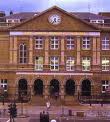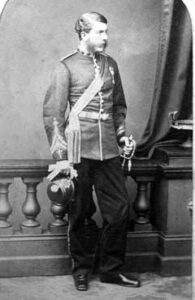
William Hugh Edward Hamilton Kittoe L.A.C. (4 January 1795 – August 1846) was a British physician and surgeon who later converted to homeopathy. Kittoe specialized in diseases of women.
William Kittoe was one of the signatories to a letter sent to the London Morning Post newspaper in March, 1845, that sought to distance British homeopathy from the dietetic treatment used by Dr. Paul Francois Curie in a case that had resulted in the death of the patient. The other homeopaths who signed the letter repudiating Curie’s methods were: Frederick Hervey Foster Quin, Hugh Cameron, John Darby Charles, J. Chapman, Alfred Day, John James Drysdale, Harris Dunsford, Thomas Engall, Joseph Gilioli, James Walter Goodshaw, William Hering, Claudius B. Ker, Charles Joseph Berry King, Henry Rider Madden, Victor Massol, William H. Mayne, George Newman, John Norton, Samuel Thomas Partridge, Edward Phillips, Robert Walker, and William Wardroper.
William Hamilton Kittoe’s early life and career is unclear, but he was born in Stoke Damerel, Devon, in January 1795, the son of Royal Navy Captain William Hugh Kittoe (1761 – 1820) and Anna Hamilton (1761- 1846).
In October 1815, William Kittoe married Dorset-born Martha Knight (1793 – 1867). They had eight children, including the youngest, and their only surviving son, Captain George Kittoe (1828 – 1876) of the 4th King’s Own Regiment of Foot.
William Hamilton Kittoe appears to have practiced medicine without qualifications in the 1830s. He rectified this on 19 October 1843, when he obtained his licence from the Worshipful Society of Apothecaries, and set up in general practice in London.
Kittoe practiced as an orthodox physician, and was the author of three mainstream medical books. However, he also recognized the value of botanical remedies, and it is clear that by 1844 his therapeutic investigations had led him towards a prescribing philosophy that appears to have been influenced by homeopathy. That year, Kittoe contributed articles and letters to The Chemist journal such as “On the Influence of Flowers on Health,” “Gamboge and Chimaphila in Dropsical Affections,” and “On Marrubium.” His recommendation for minute doses of Gamboge as an antispasmodic indicate that he was familiar with homeopathic theory at this stage.
In 1842, Kittoe was listed as practicing at 25 Thayer Street, Manchester Square, London. There he established his Institution for The Cure of Asthma. He subsequently practiced at 2, Chandos Street, Cavendish Square, London.
In 1846, Kittoe was declared insolvent and ordered to appear before the Court of Bankruptcy on 30th June. At the time of his death in August 1846, aged 52, Kittoe was residing at 24 Harley Street, London.
Select Publications:
- The Pocket Book of Practical Medicine, or, Manual for Emergencies (1837)
- Consumption, the New Cure: Asthma, the New Remedy (1842)
- The Ladies’ Medical Friend, or a Guide to the Treatment of Those Disease Incident to Females (1845)
Of Interest:

Captain George Kittoe
Source: Kings Own Museum
Captain George H. Kittoe (1828 – 1876), son of William Hamilton Kittoe, was a career army officer who served in the 4th King’s Own Regiment of Foot.


Leave A Comment